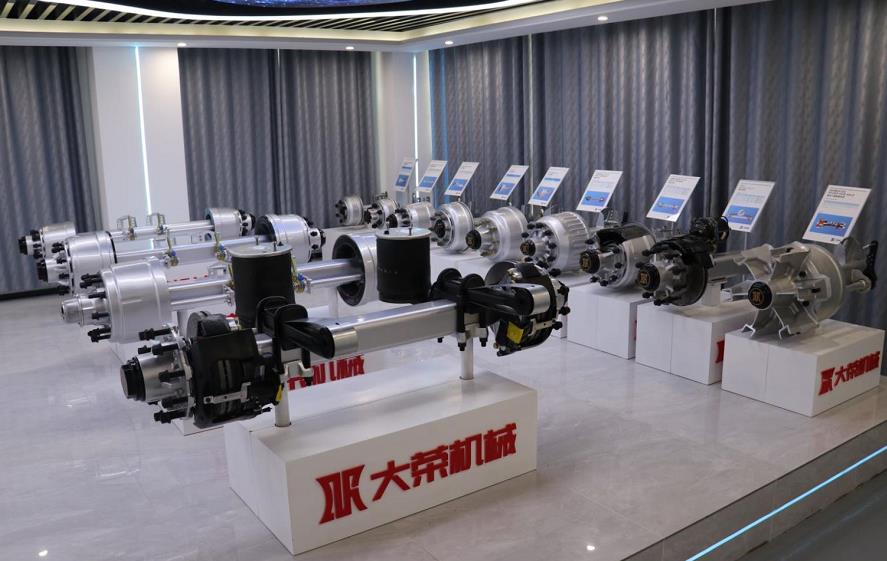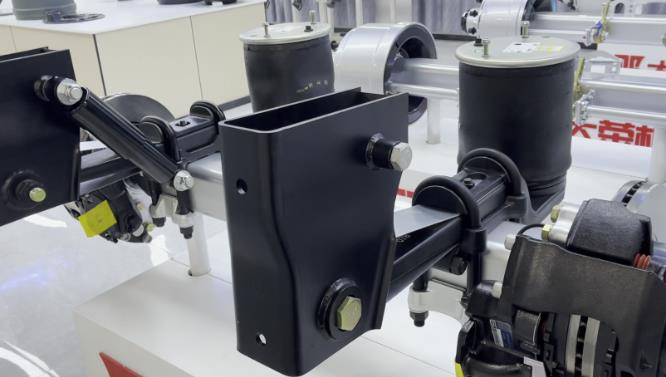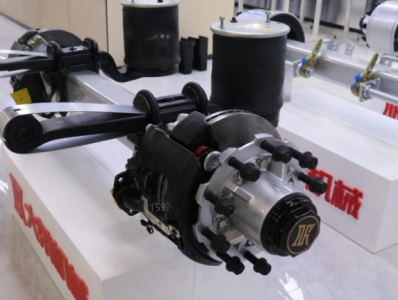How should air suspension be maintained during daily use?
The suspension system is of great significance to the driving and safety performance of the vehicle. As a suspension system using compressed air to support the body weight, the air suspension has better shock absorption and adjustability than the traditional steel plate suspension, with high comfort and greatly improved protection of goods.

It has to be admitted that the air suspension does have incomparable advantages in many aspects, but in terms of strength, resilience and durability alone, it is not as good as the steel plate structure, which may lead to the damage of the air suspension or affect its service life.
Generally speaking, the service life of air suspension is closely related to a variety of factors, such as manufacturing process, product quality, use environment, driving habits, etc., if the owner can do the relevant overhaul and maintenance work in the use process, to a large extent, it can extend its service life. Today, DARO trailer axle on the maintenance and maintenance of air suspension to conduct a detailed analysis and discussion for the reference of owners.

Air suspension daily maintenance precautions
1, strictly control the working air pressure
Under normal circumstances, the design pressure of the air bag is about one-third of the burst pressure, and the use of the process needs to be controlled within the specified range, and the working pressure is too high or too low, which will lead to the damage of the air bag in advance.
2, can not exceed the use of travel
During use, strictly refer to the use travel clearly marked in the air suspension performance parameter table.
3. Keep dry and clean
Try to use the air suspension in a dry, cool and ventilated environment;
Avoid exposure to the air suspension or contact with acids, alkalis, oils, organic lubricants and other items;
Frequent cleaning, especially when washing the car, pay attention to flushing the air bag and spring of the air suspension to reduce the dust or pollutants on the top
4. Maintain good driving habits
Do not overload, even on good roads such as highways or first-class highways, the weight of overloaded goods should not exceed 10% as far as possible;
Maintain a steady and uniform speed, develop the habit of predictive driving, reduce the situation of rapid acceleration and sudden braking;
When the road condition is not good, slow down to avoid damage to the empty suspension parts, try not to walk the sand and mud sections, must go slowly, to avoid splashing sand and stone damage to the airbag or damage to the precision parts inside the suspension.
5, parking vehicles need to pay attention
When a vehicle with air suspension is parked, make sure that the handbrake is pulled up after the vehicle is stopped to avoid the airbag being unable to rebound;
Try to park the car on a smooth road surface, do not park the car on the curb or the uneven place before and after, otherwise the air bag is not evenly stressed, and it is prone to damage in the long run.
6, daily inspection and regular maintenance
In regular maintenance, lift the vehicle to check the use of the air spring and the remaining amount of desiccant, check whether there is a fault in the air pump, distribution valve, pipeline interface, if there is no fault but a fault code, a dedicated computer should be used for comprehensive investigation.

Recommended maintenance frequency of each component of the air suspension (also refer to the empty suspension manual used)
1. Air bag
It is recommended to check frequently, especially after muddy road conditions.
Check whether the air bag and piston are clean and aging, and whether the air bag base and top plate are deformed.
Check the surface of the airbag for abnormalities, such as surface cracks, wear, wrinkles, foreign objects, etc.
If the airbag is found damaged or leaking, replace the airbag immediately.
Check the fastening of the airbag connection bolt. If loose, tighten it by torque.
2. Shock absorber
Quarterly maintenance is recommended.
Check the tightness of the upper and lower joints of the shock absorber, and use the torque wrench to check whether the locking torque is reached.
Check the tightness of the shock absorber, slight oil leakage is normal, such as serious oil leakage should be replaced.
Check whether the shock absorber is working normally, you can touch the surface of the shock absorber after driving a distance to see if it is hot (pay attention to hot hands), if it is hot, it indicates that the shock absorber is working normally, otherwise it indicates that the shock absorber has failed.
3. Connecting bolts
It is recommended that after the new car is driven for 1000 kilometers, check the U-bolt and air bag roof and base connection bolts, tighten with a torque wrench, and then check once every quarter.
If loose, alternately lock the nuts diagonally.
4. Height valve
Frequent checking is recommended.
Check whether the status of the height valve related rods is normal (the two rods are in a vertical state under no-load condition), and whether the rod connection hinge is loose and adjusted and tightened.
5. Axle lifting device
Quarterly inspection is recommended.
Check the wear of the rubber buffer block on the lifting support. If the rubber buffer block is seriously worn, replace it.
Check whether the bolts connecting the upper and lower parts of the lifting air bag are loose. If they are loose, lock them with a wrench.
6. Air piping system
Quarterly inspection is recommended.
Check the air tightness of the valve body and the pipe interface and whether the installation is tight and has a non-destructive ring. Apply soapy water to the valve body and the pipe interface. If bubbles appear, it indicates air leakage.
Check the height valve adjusting rod for damage and lock.
7. FH value
It is recommended to test every six months. Check whether the air suspension airbag height value FH is in accordance with the factory setting and adjust it to the factory state through the height valve.








